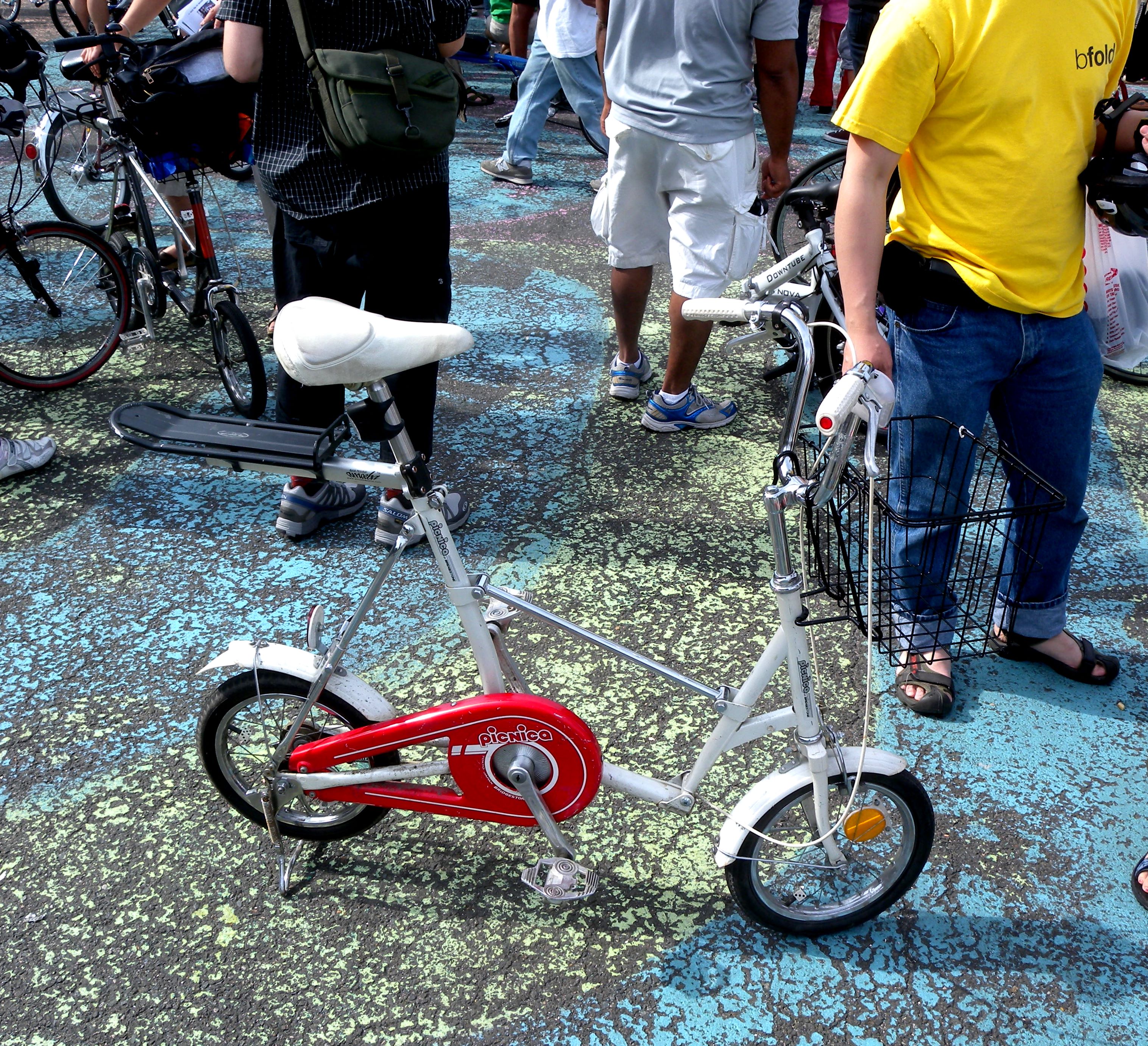Bridgestone Picnica on:
[Wikipedia]
[Google]
[Amazon]
 The
The  The Picnica is a
The Picnica is a 

 The
The Bridgestone
is a Japanese multinational manufacturing company founded in 1931 by Shojiro Ishibashi (18891976) in the city of Kurume, Fukuoka Prefecture, Fukuoka, Japan. The name Bridgestone comes from a calque translation and transposition of (), meaning ...
Picnica (Japanese: Burijisuton Pikunika: ブリヂストン 「ピクニカ」) line of collapsible bikes, some models featuring belt-drives, were introduced in the early 1980s and carried in the Bridgestone Cycle USA catalogs from 1985 through 1990. It weighs 29 pounds, and belt-drive models use a tooth-belt drive like auto timing belts and Harley-Davidson
Harley-Davidson, Inc. (H-D, or simply Harley) is an American motorcycle manufacturer headquartered in Milwaukee, Wisconsin. Founded in 1903, it is one of two major American motorcycle manufacturers to survive the Great Depression along with i ...
drive belts, along with a novel two-part chainring
The crankset (in the US) or chainset (in the UK) is the component of a Bicycle drivetrain systems, bicycle drivetrain that converts the reciprocating motion of the rider's human leg, legs into rotational motion used to drive the bicycle chain, ...
that increases belt tension with increasing load. In April 1987, ''Popular Mechanics'' described Bridgestone's Beltrex system as follows: "Unlike the belt-drive motorcycles, which can slide the rear wheel back to keep the belt taut, the Beltrex uses a floating pulley that's cogged to the drive gear. Tension on the pedal cranks drives the floating pulley forward, taking up belt slack and preventing tooth slippage."
 The Picnica is a
The Picnica is a folding bicycle
A folding bicycle is designed to be compacted into a smaller, more manageable size or shape, making it easier to store or carry . When folded, the bikes can be more easily carried into buildings, on public transportation (facilitating mixed-mo ...
, and part of the appeal of the belt drive is cleanliness. It is a small wheel bicycle
A small-wheel bicycle, sometimes called a mini velo or mini-velo, is an adult bicycle with a reasonable sized frame and relatively small wheels, usually of ETRTO 406 mm (20") or less nominal diameter, which is smaller than the common 622&nb ...
, so belt tension may be less than on a bicycle with standard-size wheels.
The folding mechanism is extremely simple, which accounts for the fact that the Picnica was marketed as the "One-touch Picnica" (Japanese: ワンタッチピクニカ). In a review, the Picnica folding mechanism was described as a "case of the frame collapsing backwards on itself, with the handlebars and seat post falling to the top of the rear wheel. To this end, the main part of the frame is a quadrilateral with a pivot at each corner, and a rear triangle made collapsible by hinged seat stays. It's those seat stays that hold everything in place. In the riding position they're straight and rigid, as on any bike. The upper part of each seat stay is locked in a retaining channel by spring pressure; squeeze the upper seat stays inwards and they pop out of their channels, and the hinge 'unlocks'. The upper and lower seat stays then fold over as the main frame folds – the whole bike collapses under its own weight."
The Picnica was apparently commercially successful, but was offered mainly in Japan, where it sold for around 35 000 Japanese yen. The belt-drive version retailed for 45 000 yen.


References
Bridgestone Bicycle models {{Japan-transport-stub